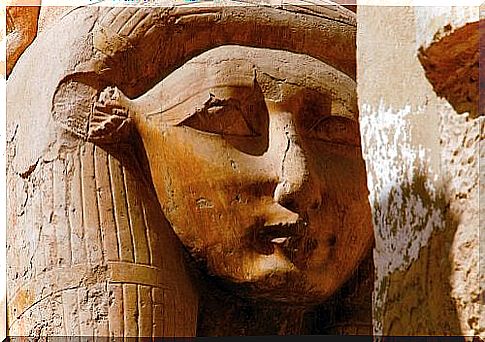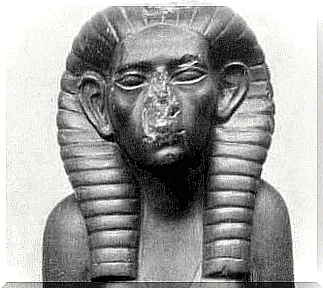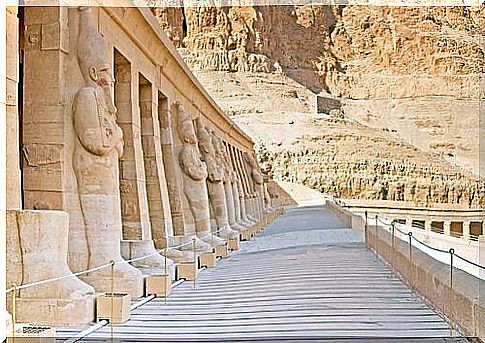Sobekneferu, The First Queen Of Egypt

Sobekneferu, also known as Neferusobek or “the beauties of Sobek”, is the first queen of Egypt to have been identified by official research.
The accepted term to refer to an Egyptian queen is woman-pharaoh or queen-pharaoh. Therefore, the term “pharaoh”, so prevalent and rooted in popular parlance, is not a correct linguistic permutation.
Like anyone who leads and, more particularly, like any woman who occupies a role predominantly attributed to men, the life story of Sobekneferu is loaded with powerful and surprising events that serve as a source of inspiration.
It took this woman a strong personality, a great determination, a flawless intelligence and an impressive tactical capacity to rule an empire as prosperous as it was difficult. Indeed, until then, it had only been ruled by pharaohs.

Brief history of the first queen of Egypt
Sobekneferu was the last ruler of the Twelfth Dynasty. She was the youngest of the daughters of Amenemhat III. His big sister, Neferuptah, had shown signs of interest in power before Sobekneferu. However, she died before her father when she had to take his place.
Egyptologists attribute a reign of three years and ten months to this empress. During this period, the Queen achieved relatively important things related to the architecture of her nation. For example, it greatly enlarged the funeral complex of Amenemhat III (today known as the Labyrinth of Herodotus). It was also at the origin of constructions in Herakleopolis Magna.
The surviving records of her reign indicate that she was a determined woman with an unwavering attitude. Her strong character, courage and, above all, her intelligence allowed her to become one of the most important queens of the Egyptian Empire.
What was so special about her?
Among the characteristic traits of Sobekneferu, we find his courage and determination. Above all, she sought respect in a world of male leaders. We must also stress s is nonconformity with gender canons of the time.
You should know that the representations of Sobekneferu dressed in male clothes have made a lot of talk. However, the first queen of Egypt never stopped using female suffixes for her titles. However, all the Egyptian leaders of the time did not agree with this.
In an attempt to normalize the role of woman in the highest office and give equal importance to female and male symbols, several portraits and statues unveil a Sobekneferu with clothes and tools of power (crowns and scepters) extremely unusual.
At a time when, as many experts claim, the female gender was sometimes seen as a cause for shame, there is no reason to believe that Sobekneferu could want to impersonate a man.

In ancient Egypt, the aspiration of any king was to leave a mark in history as a pharaoh, in the most traditional sense. This implied, culturally, to employ certain indicators of masculinity.
So, in public performances of Sobekneferu, we might view the combination of female and male markers as a mechanism for standing up as a classic and venerable pharaoh. The only difference being that she was a woman, a queen pharaoh.
A model of struggle
It is true that the tomb of the first queen of Egypt having been officially confirmed has not yet been discovered. However, we can already recognize that she was an example of strength, determination and struggle for gender equality.
We can all be early kings, rulers of our lives, rulers of our destiny. Just like Sobekneferu, we only need an iron will and an unwavering capacity for struggle to leave our mark in the history of the world.









